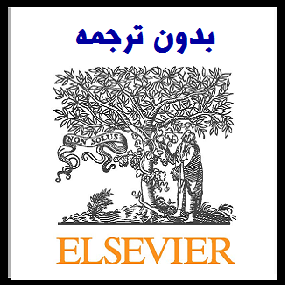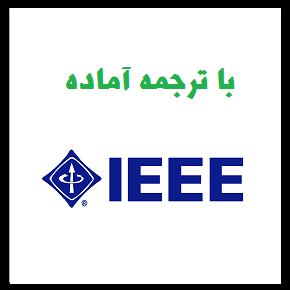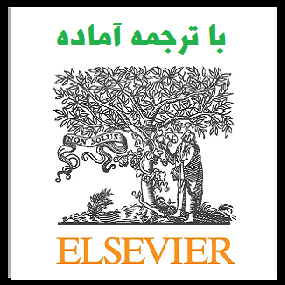دانلود مقالات 2018 با ترجمهدانلود مقالات امرالد با ترجمهسالمقالات انگلیسی روابط عمومی با ترجمهمقالات انگلیسی علوم ارتباطات اجتماعی با ترجمهمقالات انگلیسی مدیریت استراتژیک با ترجمهمقالات انگلیسی مدیریت با ترجمهمقالات انگلیسی مدیریت منابع انسانی با ترجمهناشر
مقاله انگلیسی تقویت رفتارهای ارتباطی کارکنان برای معنابخشی در شرایط بحرانی (2018 امرالد)


| عنوان فارسی مقاله | تقویت رفتارهای ارتباطی کارکنان برای معنابخشی در شرایط بحرانی: رویکرد مدیریت استراتژیک برای ارتباطات بحرانی داخلی موثر |
| عنوان انگلیسی مقاله | Enhancing employee communication behaviors for sensemaking and sensegiving in crisis situations: Strategic management approach for effective internal crisis communication |
| نمونه مقاله انگلیسی | Organizational crisis, as an unexpected event, is a time of ambiguity, uncertainty and struggle to regain control within an organization (Coombs, 2015; Miller and Heath, 2004). In terms of the internal context of an organization, a crisis situation inherently yields ambiguity and uncertainty for internal publics (i.e. employees) (Ulmer et al., 2015). Such characteristics defy interpretation and impose severe demands on employees’ sensemaking (i.e. searching for meaning) (Weick, 1988). In this regard, Weick (1988, 1993) noted that the less adequate the sensemaking process directed at a crisis, the more likely it is the crisis will get out of control. However, it often happens that employees’ sensemaking processes are impeded by misalignment between an organization and employees, as organization’s communication activities during a crisis are often misinterpreted, resisted, or rejected by employees (Daymon, 2000; Mazzei et al., 2012). Moreover, organizations can sometimes exacerbate the impact of the crisis through poor communications with employees resulting in delusion and cynicism from the latter (Goodman and Hirsch, 2010; Mazzei and Ravazzani, 2011). As employees’ communication behaviors can have particular internal and external impacts through various kinds of social networks, the misinterpretation of organizational messages can make a crisis worse endangering the organization (Heide and Simonsson, 2014; Mazzei and Ravazzani, 2011). In this sense, the role of strategic internal communication is vital in crisis situations where there is a high level of communication ambiguity and a strong need for sensemaking (Strandberg and Vigsø, ۲۰۱۶; Weick, 1988). Effective internal crisis communication reduces uncertainty and ambiguity by filling the communication gap between management and employees; to achieve this, organizational management should understand employees as one of the important strategic constituencies (i.e. internal publics) to be communicated with (Heide and Simonsson, 2014; Ulmer et al., 2015). Despite the need and importance of strategic internal communication, the extant research erroneously assumes that employees would become involved in the crisis communication without hesitation (Falkheimer and Heide, 2015). Previous studies focus dominantly on symbolic message strategies used to protect the organization’s image among external publics (customers), not internal publics (employees), during a crisis (Mazzei and Ravazzani, 2015; Johansen et al., 2012). Against this backdrop, scholars recently have called for new approaches to crisis communication in order to enhance theoretical developments (Liu and Fraustino, 2014; Paquette, 2015). One effort is to shift the focal point of current research from an external dimension to an internal dimension, one that emphasizes communicating with employees and understanding their impact as crisis communication senders as well as receivers (Heide and Simonsson, 2014; Strandberg and Vigsø, ۲۰۱۶). In this sense, researchers suggest that managerial efforts (i.e. strategic management approach) are needed to better understand the dynamic nature of crisis in the internal dimension in terms of crisis management and communication (Grunig, 2011; Johansen et al., 2012). Theses backgrounds serve as the impetus for this study. Taking the strategic management approach, this study conducted a nationwide survey among full-time employees (n ¼ ۵۴۴) in the USA to explore organizational effectiveness of internal crisis communication and how it enhances voluntary and positive employee communication behaviors (ECBs) for sensemaking and sensegiving and their antecedents in a crisis situation where organizational sensemaking breaks down. By doing so, this study provides meaningful insight into: new crisis communication theory development that takes a strategic management approach emphasizing employees’ valuable assets from an organization, and effective crisis communication practice that reduces misalignment with employees and that enhances voluntary and positive ECBs for the organization during a crisis. |
| سال انتشار | 2018 |
| ناشر | امرالد |
| مجله | مجله مدیریت ارتباطات – Journal of Communication Management |
| کلمات کلیدی | ارتباطات داخلی، روابط عمومی، ارتباطات بحرانی، ارتباطات استراتژیک، ارتباط کارکنان |
| کلمات کلیدی انگلیسی |
Internal communication, Public relations, Crisis communication, Strategic communication, Employee communication |
| صفحات مقاله انگلیسی | 26 |
| مناسب برای رشته | مدیریت، علوم ارتباطات اجتماعی |
| مناسب برای گرایش | مدیریت منابع انسانی، مدیریت استراتژیک، روابط عمومی |
| توضحیات | این مقاله انگلیسی جدید بوده و تا کنون ترجمه نشده است. جهت ثبت سفارش ترجمه از لینکهای زیر استفاده نمایید. |
| دانلود مقاله انگلیسی | ○ دانلود رایگان مقاله انگلیسی با فرمت pdf (کلیک کنید) |
| سفارش ترجمه فارسی | ○ سفارش انجام ترجمه و تایپ این مقاله (کلیک کنید) |
| سایر مقالات این رشته | ○ مشاهده سایر مقالات رشته مدیریت (کلیک کنید) |




